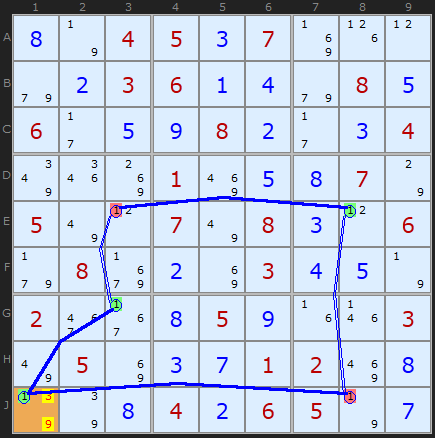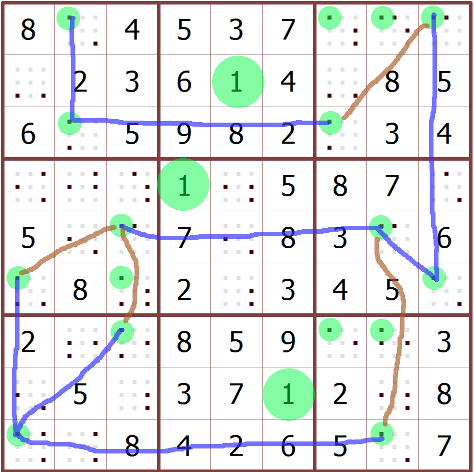I am having trouble with Nice Loops...
The following image is Figure 1 on the Sudoku Wiki X-Cycles (part 2) page

The page has the following rule (2):
"If the adjacent links are links with strong inference (solid line), a candidate can be fixed in the cell at the discontinuity."
In the example above this refers to r9c1.
When I study the 1's in this puzzle I get the following:

Green circles = instantiated or candidate 1's
Blue lines = strong links
Brown lines = weak links
(I am only showing defining weak links existing between strong links. I think for example there is a weak link between r5c3 & r6c3...)
I am wondering how/why the author chose to 'link' from r9c1 to r7c3 and not r6c1?
I don't think it would have altered the example.
In terms of the rule (listed above); r3c2, r9c1 and r6c9 all seem correctly match the rule; setting any of them to 1 "solves" the puzzle.
But, r5c8 also seems to match the rule, though it has 2 strong and 1 weak link.
I am thinking that the presence of the weak link means r5c8 can be considered a 'normal' node in the loop.
I am also wondering how one 'builds' the loop.
- r5c8 has 3 links - 1 weak and 2 strong
- r5c3 has 3 links - 2 weak and 1 strong
- r9c1 has 3 strong links
is it simply a matter of trying to alternate strong & weak links?
Steve

